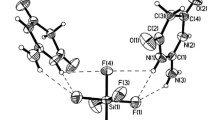Conclusions
1. Symptoms of peptic ulcer rapidly are brought under control with colloidal aluminum hydroxide therapy.
2. Since the treatment is easily followed it quickly gains the patient’s confidence.
3. No toxic symptoms have been observed in any case.
4. The free acidity of the stomach is lowered after treatment with aluminum hydroxide, but returns to the initial level after the medication is discontinued. In contrast to sodium bicarbonate, aluminum hydroxide does not stimulate an increase of HCl output after its primary action.
5. Although Al (OH)3 obviously serves as a gastric antacid, it is possible that its efficacy in the treatment of peptic ulcer may be dependent in part at least upon its slight astringent and demulcent properties and the fact that it appears to increase the secretion of mucin.
6. No contra-indications for aluminum hydroxide therapy have been observed. The normal content of aluminum in the blood is very small, and this content is not materially altered by the ingestion of large doses of alumina cream. Determinations of the total base, chloride, CO2 content and pH of the blood have failed to disclose any disturbance in the acid-base balance which could be ascribed to this therapy.
Similar content being viewed by others
References
Crohn, B. B.: The Clinical Use of Colloidal Aluminum Hydroxide as a Gastric Antacid.Jour. Lab. Clin. Med., 14:610–614 (1929).
Myers, V. C., and Mull, J. W.: The Influence of the Administration of Aluminum upon the Aluminum Content of the Tissues, and upon the Growth and Reproduction of Rats.Jour. Biol. Chem., 78:605–613 (1928); Myers, V. C., and Morrison, D. B.: The Innuence of Administration of Aluminum upon the Aluminum Content of the Tissues of the Dog.Jour. Biol. Chem., 78:615–624 (1928).
Einsel, I. H., and Rowland, V. C.: The Aluminum Hydroxide Treatment of Peptic Ulcer.Ohio State Med. Jour., 28:173–174 (1932).
Author information
Authors and Affiliations
Additional information
From the Department of Medicine (City Hospital Service) and of Biochemistry, School of Medicine, Western Reserve University, Cleveland.
Rights and permissions
About this article
Cite this article
Einsel, I.H., Lloyd Adams, W. & Myers, V.C. Aluminum hydroxide in the treatment of peptic ulcer. American Journal of Digestive Diseases and Nutrition 1, 513–516 (1934). https://doi.org/10.1007/BF02998966
Issue Date:
DOI: https://doi.org/10.1007/BF02998966



